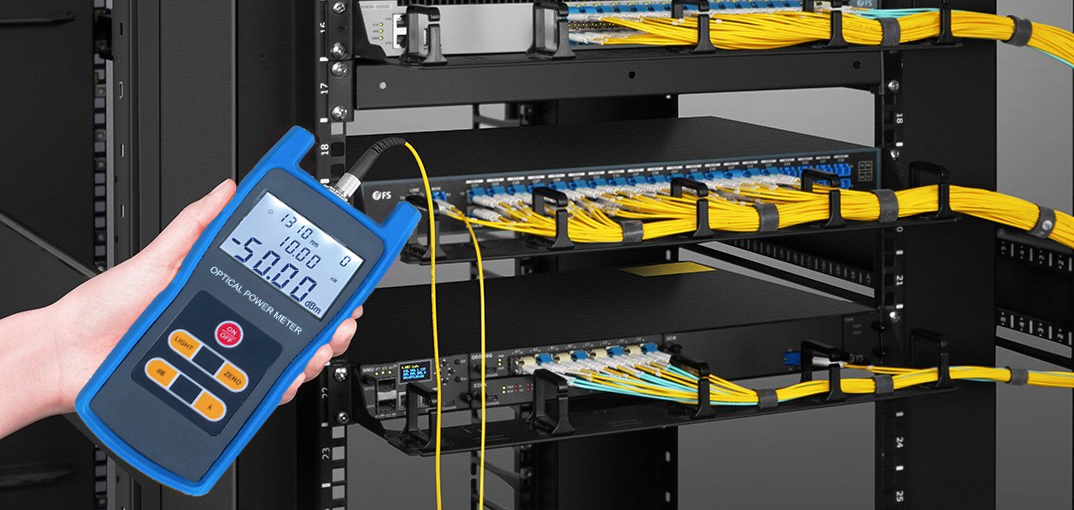Improve efficiency with state-of-the-art robotic vision systems.
Improve efficiency with state-of-the-art robotic vision systems.
Blog Article
Exploring the Advantages of Optical Fibre Testing for Boosted Interaction Solutions
The importance of optical fibre testing in modern interaction systems can not be overemphasized, as it offers as a structure for guaranteeing network integrity and efficiency. This aggressive testing strategy has profound implications for signal high quality and functional efficiency, elevating the concern of exactly how these practices add to lasting sustainability in an ever-evolving technical landscape.
Relevance of Optical Fibre Screening
The value of optical fiber screening can not be overemphasized in today's data-driven atmosphere. As companies progressively rely upon high-speed data transmission for day-to-day procedures, the stability and performance of optical fiber networks are critical. Evaluating guarantees that these networks can support the large quantities of data generated and transferred effortlessly, cultivating effective interaction and connectivity.
Optical fiber testing offers numerous critical functions, including validating setup quality, identifying possible mistakes, and establishing overall system efficiency. Routine screening can protect against pricey downtimes and solution disruptions, enabling companies to preserve operational connection. It helps in conformity with industry requirements and guidelines, making certain that fibre optic setups satisfy needed requirements for safety and dependability.
In addition, screening can improve the longevity of fibre optic systems. By proactively identifying problems such as signal loss, depletion, or connector failings, companies can attend to issues prior to they escalate, thus expanding the life of their framework. In recap, optical fiber testing is not simply a technical demand yet a calculated financial investment that enhances network dependability, optimizes efficiency, and inevitably supports the growth and efficiency of modern-day communication systems.
Key Checking Approaches

OTDR is a crucial method utilized to recognize mistakes, step splice losses, and analyze the overall honesty of a fiber optic link. By sending out a pulse of light down the fibre and examining the reflected light, technicians can determine locations of faults and review the network's performance over lengthy distances.
Insertion loss screening gauges the amount of signal loss that occurs when light go through a link or splice. This technique is vital for validating that links fulfill given loss limits, which is important for maintaining ideal efficiency in interaction systems.
Optical return loss screening evaluates the amount of light showed back in the direction of the resource as a result of flaws in the fiber or links. High return loss worths suggest better check my reference performance and lowered signal destruction.
Together, these testing approaches supply an extensive analysis of fibre optic networks, guaranteeing their integrity and capability in varied interaction applications.
Influence On System Efficiency
Effective optical fiber testing directly affects the total performance of communication systems. By ensuring the honesty of fibre optic wires, testing identifies prospective mistakes such as attenuation, splice loss, and port imbalance. These concerns can dramatically weaken signal top quality, causing disruptions and lowered data transmission speeds.

Moreover, normal optical fiber testing adds to long-lasting system sustainability. It allows early discovery of damage, enabling prompt upkeep and upgrades prior to major failings happen. This not just lengthens the life-span of the infrastructure yet likewise makes sure that communication systems continue to be affordable in terms of efficiency.
Cost-Effectiveness and Performance
Cost-effectiveness is a critical consideration in the deployment and maintenance of optical fiber networks. Implementing robust optical fibre screening treatments can dramatically lower functional prices by identifying concerns prior to they website link intensify into significant problems. robotic vision. By spotting faults, depletion, and other efficiency hindrances early, companies can stay clear of costly repair work and downtime, which can interrupt solutions and bring about income loss
Furthermore, effective testing methods simplify the installation procedure, allowing specialists to work a lot more successfully. This translates to decrease labour prices and faster task conclusion times. Advanced testing devices, such as Optical Time Domain Name Reflectometers (OTDRs), allows a precise assessment of fibre top quality, guaranteeing that only optimum products are utilized, therefore minimizing waste.
Normal screening likewise adds to much better source allocation. By comprehending the network's performance, companies can make informed decisions concerning upgrades and developments, ensuring that investments are made where they are most needed. In summary, optical fiber screening improves cost-effectiveness and efficiency, sustaining the lasting sustainability and competitiveness of interaction systems in a progressively requiring market.
Making Certain Long-Term Dependability
Executing extensive optical fibre testing not just boosts price savings and operational effectiveness however additionally plays a critical role in making sure the long-lasting dependability of communication networks. Constant screening techniques, consisting of attenuation and transmission capacity evaluations, aid determine potential deterioration in fibre efficiency prior to it leads to solution disturbances.
By employing sophisticated screening methods, network operators can pinpoint mistakes or weak points in the fiber framework, permitting timely remediation. This positive approach decreases downtime, making sure that communication systems stay functional and reliable. Additionally, routine testing adds to the development read here of a much more resilient network, as drivers can adjust and optimize their framework based upon real-time data insights. optical fibre testing equipment.
Additionally, ensuring compliance with industry standards through optical fibre testing enhances the high quality and integrity of the entire communication system. This adherence not just reinforces confidence among stakeholders but also lines up with regulatory demands, which are progressively strict.
Conclusion
In final thought, optical fibre screening acts as a basic element in boosting communication systems. By employing numerous testing methods, such as OTDR and insertion loss analyses, networks can accomplish optimum performance and integrity. The aggressive identification of mistakes not just enhances signal high quality yet likewise lowers downtime, eventually adding to cost-effectiveness and operational efficiency. Additionally, adherence to industry standards cultivates stakeholder self-confidence, ensuring the lasting sustainability of communication frameworks in a significantly data-driven landscape.
Report this page